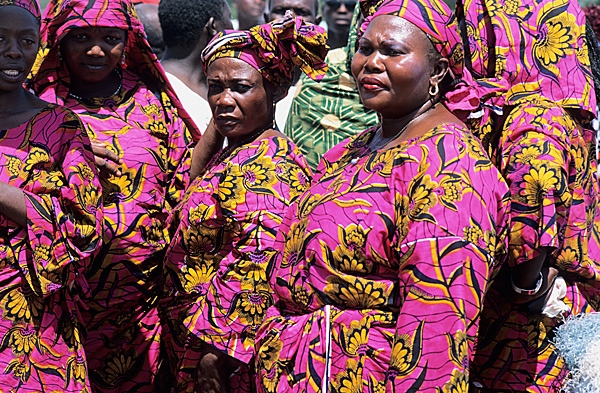Cameroon: Cameroon People Profile
2015/01/27
Cameroon Population




The total population in Cameroon was last recorded at 21.4 million people in 2014 from 5.4 million in 1960, changing 305 percent during the last 50 years. Population in Cameroon is reported by the World Bank. Cameroon Population averaged 11.69 Million from 1960 until 2012, reaching an all time high of 21.70 Million in December of 2012 and a record low of 5.36 Million in December of 1960. The population of Cameroon represents 0.29 percent of the world´s total population which arguably means that one person in every 348 people on the planet is a resident of Cameroon.
| Labour | Last | Previous | Highest | Lowest | Forecast | Unit | Trend | ||
| Population | 21.70 | 2012-12-31 | 21.16 | 21.70 | 5.36 | 21.74 | 2013-12-31 | Million |
|
| Unemployment Rate | 3.80 | 2011-12-31 | 5.60 | 5.60 | 3.80 | 3.60 | 2012-12-31 | Percent |
|
Population
Cameroon's largest cities are Douala and Yaoundé, the capital.
Virtually all of the Cameroonians are of black African ancestry. The country has about 200 ethnic groups. The largest in south and central Cameroon are various Bantu-speaking peoples, such as the Bamileke, Doula, Tikar, and Pahouian; in the north, the largest are the Fulani and Matahan. Cameroon has two official languages—French and English—but most persons speak indigenous tongues. The principal religions are Christianity (followed by about 40 per cent of the population), animism (about 40 per cent), and Islam (about 20 per cent).
Religions
Freedom of conscience and freedom of religion are guaranteed by the constitution. The Fulani people in the north are mainly Muslim, as are the Bamoun group of the western provinces. Christian missionaries (Protestants since 1845 and Roman Catholics since 1890) have been particularly active in other areas, with the English-speaking citizens of provinces of the western region being primarily Protestant and the French-speaking citizens in provinces of the southern and western regions being predominantly Catholic.
Social discrimination by Muslims against those of indigenous religions is fairly widespread. In the northern region, the tension between the Fulani and Kirdi groups is based in part on such past religious differences. The Fulani have been traditionally Muslim while the Kirdi have traditionally practiced indigenous religions. Many of the Kirdi are now Muslim, yet they remain economically, socially, and educationally disadvantaged in this region.
About 40% of the population are at least nominally Christian, of whom approximately half are Roman Catholics and half are affiliated with Protestant denominations. As many as 20% are at least nominally Muslim and about 40% practice traditional indigenous religions or no religion at all. Many of the indigenous religions are local religions practiced primarily in rural areas.
The practice of witchcraft is considered a criminal offense, however, prosecution is generally applied only in conjunction with other criminal actions, such as murder.
- Cameroon News
-
- BOTSWANA: South Africa plays an active role in the AU
- BOTSWANA: Africa: How to Adapt to Beat Crippling Droughts
- BOTSWANA: Africa: Expanded Engagement for Caterpillar - Boosting Sales & Alleviating Poverty
- BOTSWANA: WHO Africa Health Forum App Leads the Way
- BOTSWANA: Africa: 'Market Information Gap Threatens U.S.$400 Billion Intra-Africa Trade'
- BOTSWANA: Africa: Crafting an African Victory for the World
- Trending Articles
-
- ITALY: Italy's Current Account Surplus Increases In May
- EUROPEAN UNION: Draghi Urges Patience And Persistence On Inflation
- ARGENTINA: ARGENTINA: Country Reaches Deal To Export Lemons To Mexico
- EUROPEAN UNION: ECB Keeps Markets Guessing On Tapering
- EUROPEAN UNION: Eurozone Consumer Confidence Unexpectedly Falls In July
- SOUTH AFRICA: South Africa CB Unexpectedly Trims Interest Rate By 25 Bps






.gif?1356023993)

